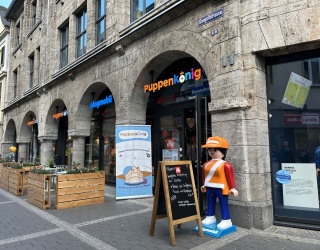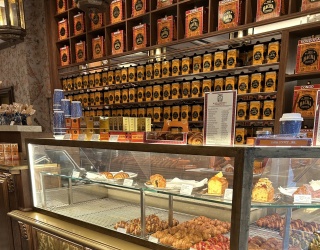
Researchers at the National Institute of Standards and Technology (NIST) have just completed a multiyear study to identify the "best" candidates for future use as air conditioning refrigerants that will have the lowest impact on the climate.
Unfortunately, all 27 fluids NIST identified as the best from a performance viewpoint are at least slightly flammable, which is not allowed under U.S. safety codes for most end uses. Several fluids among the list of refrigerants are highly flammable, including propane, the fuel for outdoor grills.
In other words, the NIST study found no ideal refrigerant that combined low "global warming potential" (GWP) - a measure of how much heat a gas will trap if released into the atmosphere - with other desirable performance and safety features such as being both nonflammable and nontoxic. The results appear in Nature Communications.
"The takeaway is there is no perfect, easy replacement for current refrigerants," NIST chemical engineer Mark McLinden said. "Going into the study, we thought surely there has to be something else. Turns out, not so much. So it was a bit surprising, a bit disappointing."
To help reduce global warming, nearly 200 nations, including the United States, in October 2016 agreed to amend the Montreal Protocol to phase down by mid-century the refrigerants used in most air conditioning (AC) systems. The partial phase down, rather than a complete phaseout, recognized the complicated choices that will need to be made to select replacements. Fortunately, valuable new data are now available to support those decisions.
"The path forward will involve tradeoffs," McLinden continued. "Safety codes could be revised to allow the use of slightly flammable refrigerants. Blends of two or more fluids could yield a nonflammable refrigerant, but at a higher GWP. Carbon dioxide is nonflammable, but would require a complete redesign of AC equipment."
Current refrigerants are hydrofluorocarbons (HFCs), which are "greenhouse gases" with high GWPs. Although their contribution to climate change is now small, it is expected to rapidly increase along with the use of air conditioning around the world. The Montreal Protocol, the treaty that regulates substances that deplete Earth's protective ozone layer, originally spurred the introduction of HFCs as replacements for ozone-depleting compounds previously used.
U.S. regulators already recognize the difficulty of choosing new refrigerants. The Environmental Protection Agency has not set specific GWP limits, but rather has conducted comparative risk analyses for each refrigerant and end use. The criteria include atmospheric effects and related health and environmental effects, ecosystem risks, consumer risks, flammability, cost and availability.
To help U.S. policymakers and industry understand the limits and tradeoffs involved in a phase-down of the HFCs, NIST undertook a comprehensive, four-year search for the best single-component, low-GWP replacement fluids. GWP is defined as the warming potential of one kilogram of a gas relative to one kilogram of carbon dioxide.
The NIST study focused on possible replacement fluids for small AC systems typical for homes and small businesses. A blend of HFCs called R-410A is now the most popular refrigerant in such systems. These AC units are sealed, meaning they should not release HFCs into the atmosphere. However, the systems can leak, and when they are serviced or discarded, refrigerant may escape and not be recovered and recycled, McLinden said.
The study screened a database of more than 60 million chemicals, estimating the properties based solely on their molecular structure. This built upon a computational method previously developed at NIST.
Because all current refrigerants are small molecules, the NIST search was limited to molecules with 18 or fewer atoms and only eight elements that form compounds volatile enough to serve as refrigerants. This initial screen resulted in 184,000 molecules to be considered further.
Screening for energy properties corresponding to fluids usable in small AC systems and GWP of less than 1,000 (conventionally understood to be the effects over a 100-year timespan) yielded 138 fluids. The researchers then simulated the performance of these 138 compounds in air conditioners. A co-author at The Catholic University of America in Washington, D.C., helped develop the simulation model and evaluate the results. Further screening to rule out chemically unstable or very toxic compounds or those with low energy efficiency resulted in the final list of 27 low-GWP fluids.
Propane has a GWP of 3, much lower than R-410A's value of 1,924. Potential refrigerants with the lowest GWPs include ammonia, commonly used in large industrial refrigeration systems but toxic and slightly flammable, and dimethylether, a propellant and potential fuel that is only slightly less flammable than propane. Carbon dioxide has a GWP of 1 and is nonflammable, but it would require a different type of refrigeration cycle operating at very high pressures. Other low-GWP compounds include hydrofluoroolefins, a current focus of industry research but slightly flammable.
Although there is no specific GWP limit in the United States, phaseout dates have been set for some of the highest-GWP HFCs. (Refrigerants with a GWP of less than 750 are allowed in the European Union for small AC systems.)
NIST's list may offer new ideas because it includes many refrigerants that are not yet on the EPA list of acceptable substitutes. The refrigeration industry has been actively developing new fluids that are slightly flammable, and the results of the present study support this course, McLinden said. Looking forward, the NIST study's conclusions indicate the need to recognize and deal with tradeoffs in planning for the future, he said.
For example, how should safety codes be changed to ensure that flammable refrigerants can be used safely? Blends of different refrigerants may offer a compromise between safety and GWP. For example, a low GWP but flammable fluid blended with a nonflammable but high-GWP fluid could result in a nonflammable fluid with a moderate value of GWP, McLinden noted.








